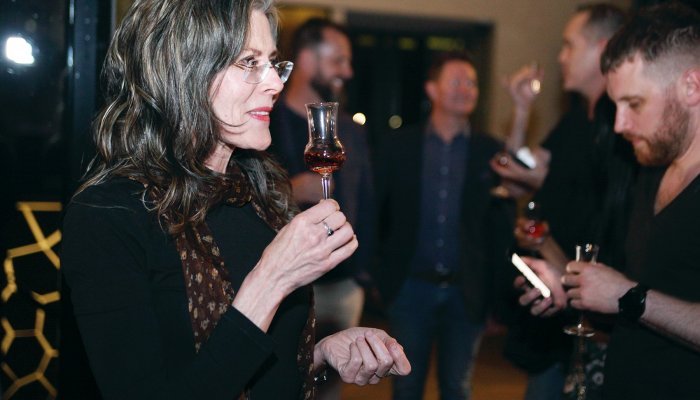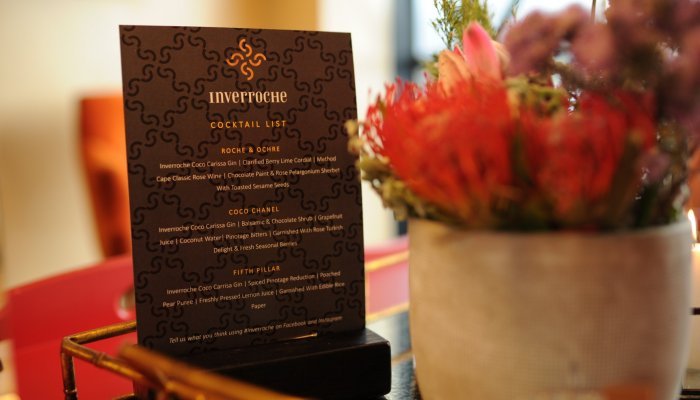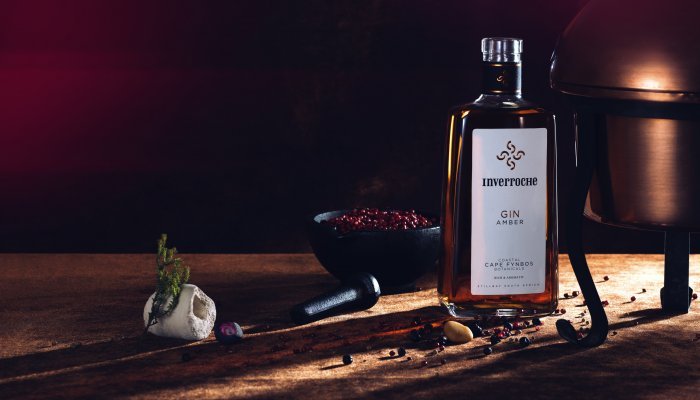The value of using a case study approach is that it contributes to the learning journey by tapping into the human connection through real-life stories. Typically, our cases should fall within the GIBS universe, which means a strong research focus on business in the African context. This means we focus on the likes of entrepreneurship, management in African markets, and business in society – exploring issues like sustainability and ethics. In all instances, we work collaboratively and across disciplines. Inverroche ticked all these boxes.
Why Inverroche?
The idea of an Inverroche case study was first raised by our colleague, organisational development expert Maxine Jaffit, who felt the business held important lessons around growth. She provided the necessary introductions.
A craft spirit needs a good story, otherwise, it’s simply just another commercial drink. But Inverroche was a young brand and hadn’t yet embedded its history into the brand, so the engagement began with a tour of the distillery and a tasting, which was led by an expert ‘ginealogist’ who explained the different types of fynbos. During this first visit, founder, Lorna Scott, and botanist, Dr. Jan De Vynck, provided essential background information that would prove invaluable in arriving at a decision point and a theoretical angle for the case study.
Every case needs a good decision point and with Inverroche this was not difficult to determine: An American businessman, who had been holidaying in Still Bay, made a business case to Scott to be the sole distributor in the United States. What would they decide?
Our question to students was: What would you do?
After gaining a sense of the decision point (which would set the stage for the possible theories and learning outcome), and working through this with Scott and her team courtesy of a mini-lecture and theoretical discussion around the chosen angle, a draft was drawn up. Then followed further interactions along with regular requests for additional information and data; at each step of the way, they were incredibly helpful and open to sharing and collaborating.
It took five iterations before the polished case study had achieved the richness required to make a beneficial contribution to the business school discourse. At this point the attention turned to the teaching note, to which students are not privy but which allows the writers to communicate with lecturers around the world who might use this case study in their classrooms.
The case study and the teaching note are intimately linked, so there is inevitably an overlap with the information already contained in the case, but the teaching note provides the theoretical direction needed to squeeze the most out of this learning opportunity.
In the case of Inverroche, the teaching note focused on a resource-based view of a firm, uncovering resources and capabilities instrumental to a firm obtaining a competitive advantage. The VRIO framework – which focuses on the value, rarity, imitability and organisation of resources1 – was introduced as a tool to evaluate the resources of a firm. The teaching note also focused on the advantages and disadvantages of entering a particular market and the possible modes of entry when looking to move into a new market.
Sharing the backstory
Of course, there was more to Scott’s brand than just its business case. The Inverroche story is integrally linked to Scott’s drive to improve the lives of others in her community. The brand began with Scott’s aim to develop industries and economic ventures to boost the opportunities available to locals, especially women. At first, she set about exploring winemaking, but when that didn’t come together, she turned her attention to gin, the only spirit which obtains its flavour from the many botanicals added during re-distillation and was, therefore, a perfect showcase for the region’s unique ingredients.
Scott launched three fynbos-infused gins under the label Inverroche, a moniker combining the Gaelic word ‘Inver’, which means a confluence of water, and ‘Roche’, the French word for stone. This was a nod to her Scottish and French lineage.
By December 2011, she was ready to go to market in the new year. But, egged on by neighbours and friends, she began running daily gin tasting sessions from her farm during that Christmas. Word of mouth spread and by the second week of January she’d sold her entire stock, with each bottle selling for R200. Word spread and soon Inverroche was being featured in magazines and newspapers; the brand took on a life of its own, gaining customers as far afield as London and Singapore.
By 2017, Inverroche was bottling 15 000 bottles per month, employing 25 permanent staff with a further 10 part-time employees assisting during the holiday seasons. In the same year, Scott invested in an indigenous fynbos nursery to grow and harvest fynbos to improve the alignment between the demand for her products and her ability to meet the demand.
By 2018, Inverroche had achieved a 42.2% market share in the South African premium gin market and was beating well-known names from global brand houses in South Africa like Diageo South Africa and Distell Group.
Despite an active decision to service the local market first and maintain a low profile, by early 2018, Inverroche gins were being sold in 18 countries and 12% of production was finding its way offshore – this despite no formal resolution to develop markets abroad.
Herein lies the rub…
The international craft spirits industry was the fastest-growing segment of the alcohol industry in 2017 and 2018, and the United States was an attractive key growth market. The question posed in the case study was how Inverroche might tap into this lucrative market without compromising the brand and its distinctly South African flavour.
How Scott handled this quandary is only unveiled at the end of the classroom session. But, armed with the information to tackle this business predicament, students must determine Inverroche’s options for entering the United States market. Along the way they will ask: How does she handle the relationship with her existing small-scale distributor? Could she continue to manage the story of Africa’s unique heritage from so far away? Inverroche is integrally linked to the story of southern Africa, so it must be produced in South Africa – how would this work?
These where the choices facing the Inverroche brain trust. Our question to students was: What would you do?
A craft spirit needs a good story...
The business lessons
The Inverroche case opens up a number of cross-border issues which are common to emerging markets, and specifically African-grown brands. It touches on how best to use business resources to gain a competitive advantage; taps into the advantages and disadvantages of entering a foreign market; explores the influence of resources and capabilities on competitive dynamics; and, highlights the different options available for expanding a business internationally.
For the authors, the dissection of the case should direct the student towards the following competencies:
· uncover the firm-specific resources that drive the success of a small business in a competitive environment;
· evaluate the usefulness of firm-specific resources in gaining a competitive advantage in a market;
· identify the advantages and disadvantages of entering a foreign market;
· explain the influence of resources and capabilities on competitive dynamics; and
· assess the different options to expand the business internationally.
A valuable business journey
In 2018, armed with a completed Inverroche case study, Albert Wöcke took the case study on a ‘test drive’ by teaching its international business insights to MPhil students at GIBS. The students were divided into groups and had to present their recommendations to founder, Lorna Scott, who subsequently discussed these with her executive team. Inverroche’s internationalisation strategy, the promotion of the Inverroche story and the new gin range were all influenced by the MPhil students and the case study writing process.
From an academic perspective the case was a success, but what did Scott and her team get out of the process? Acumen touched based with Scott:
How did you feel about being approached for this case study?
We were very flattered to be identified as a case study for such a high-profile university. It was daunting, to be honest. I’m very fortunate that on my strategic team I have Jan [De Vynck], who has a strong academic background and could guide me through how these things work. So it was less painful than I anticipated.
Was there value in the process?
It was very valuable and very good timing, our business is at a point where we’re going up from a growth phase and we have to consider where we’re going. We’d put structures in place but it forced us to look at things from a more critical perspective.
Did you find the student feedback useful?
The outcome of the process when the students presented was very illuminating. We were presented with scenarios that had been thought through very well and some unusual ideas came out. That’s helped us to strategise.
Was it a challenge to open your business up to such scrutiny?
Although we were pretty cautious about sharing our information, once you understand the value you become less reticent about sharing data.
Any unexpected benefits?
It forced us to take a retrospective view. My son has read the final version and said that for the first time we have an accurate record of how Inverroche came about. I thought that was a nice observation.
1 Jay B. Barney, Looking Inside for Competitive Advantage, Academy of Management Executive 9, no. 4 (2001): 50-57
2018 GIBS CASE WRITING COMPETITION
Albert Wöcke and Danie Petzer took first prize in the 2018 GIBS Case Writing Competition for their Inverroche Gin: Taking African Sophistication International submission. The 14 cases and teaching notes submitted for consideration were blind reviewed by three judges and showed the depth of quality case study work being produced by GIBS.
KEY TAKEAWAYS
· A case study – like an artisanal gin – is crafted to give the reader the right combination of flavours to pique their interest.
· Positioning the case against academic theory is important. A good theory is what makes the case teachable and separates it from just another ‘good story’ or a Wikipedia page.
· Inverroche Gin was an ideal subject for a compelling African case study, featuring an interesting backstory, twists and turns along the way, and a future dilemma for students to explore.











